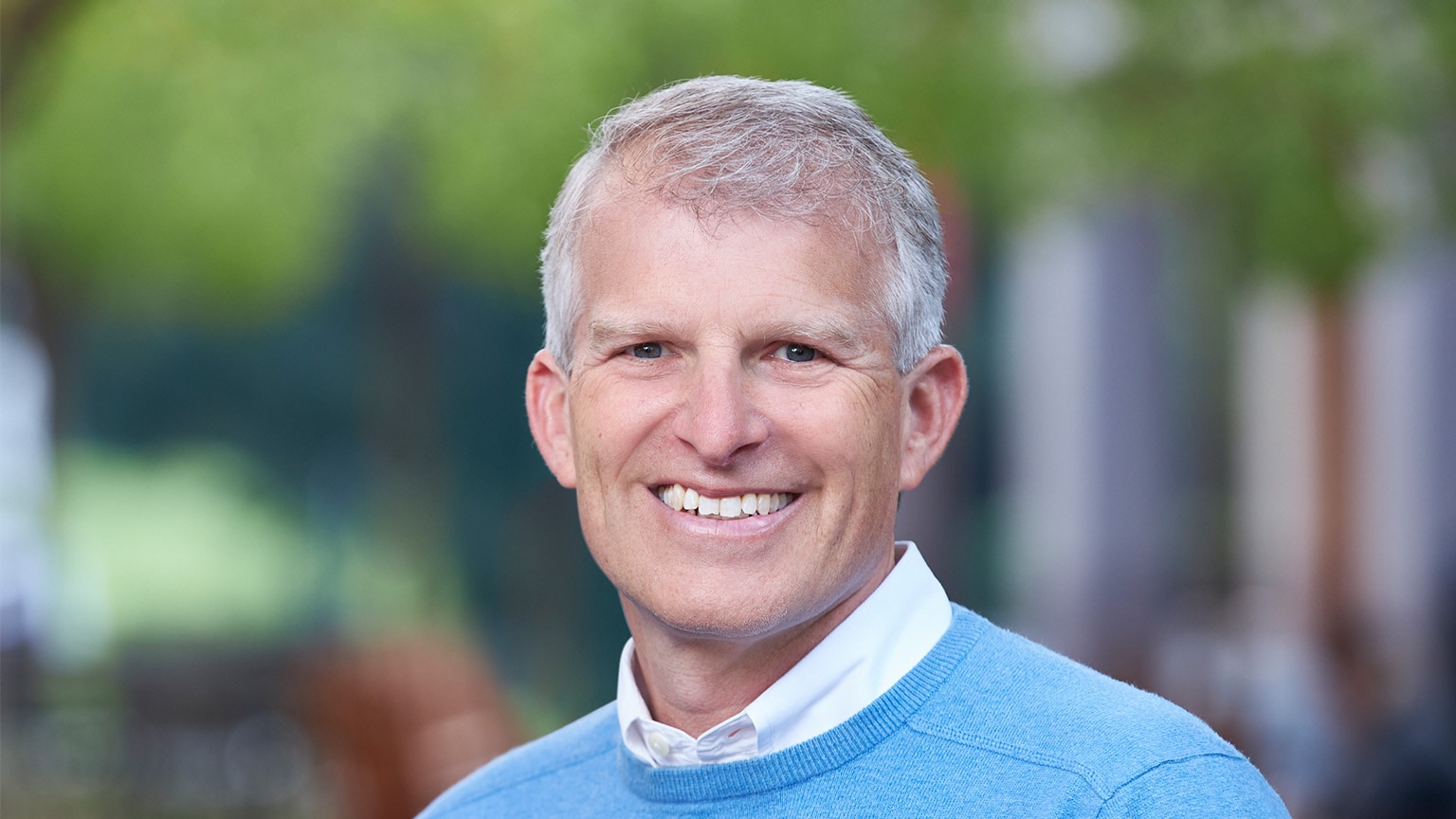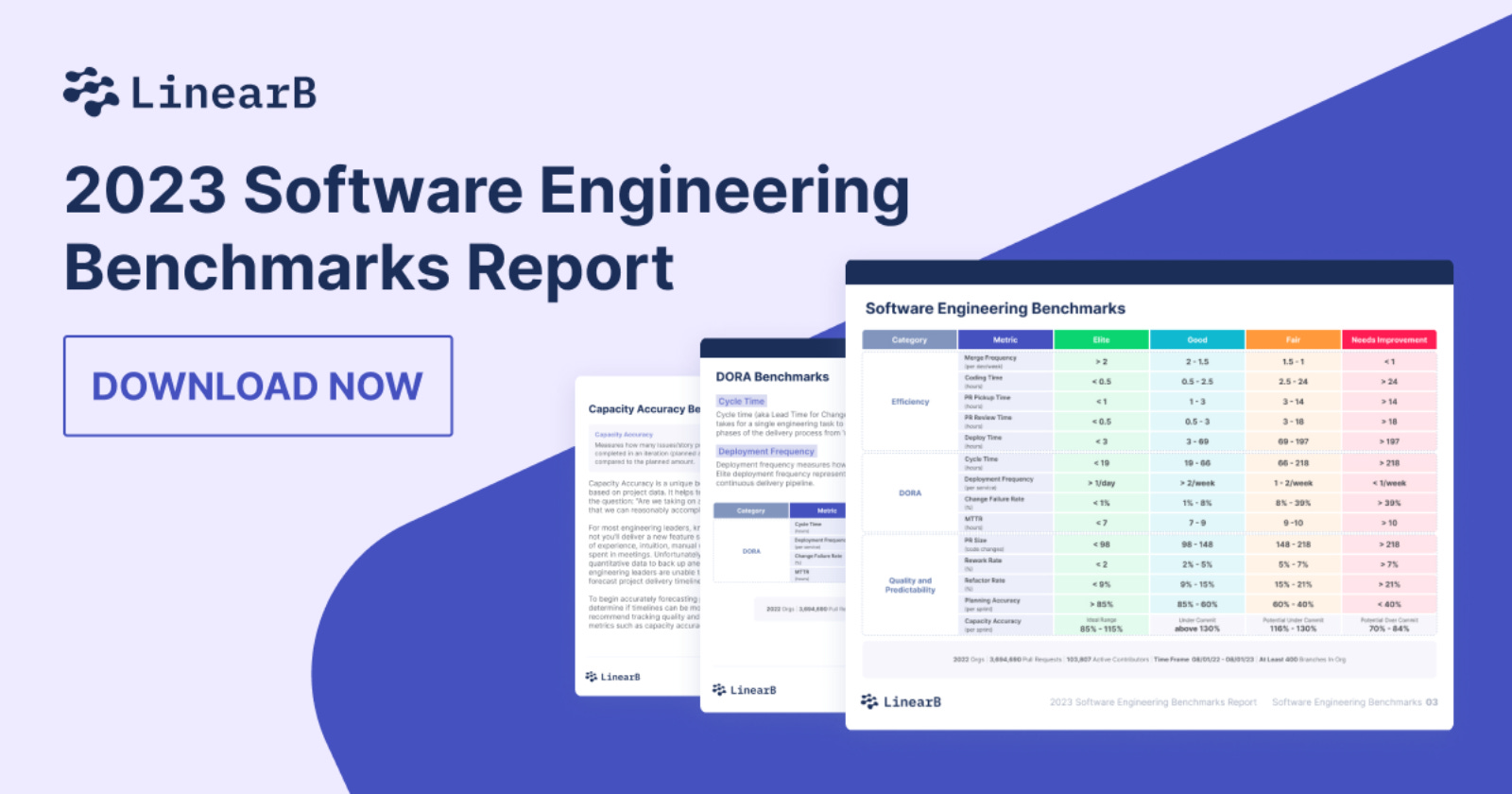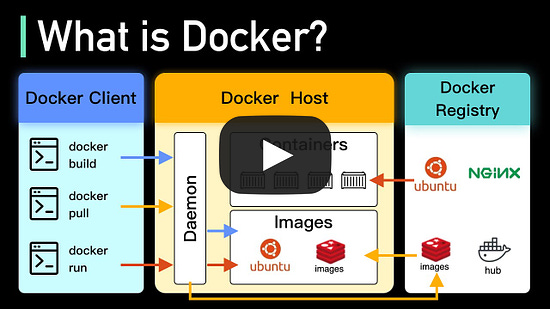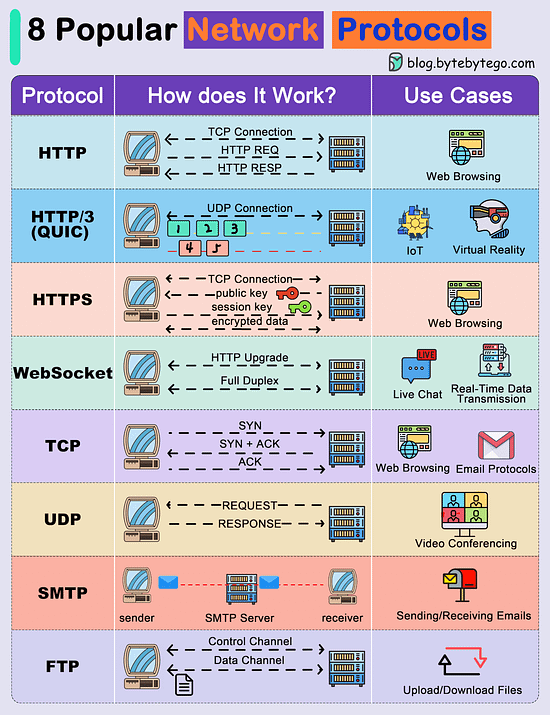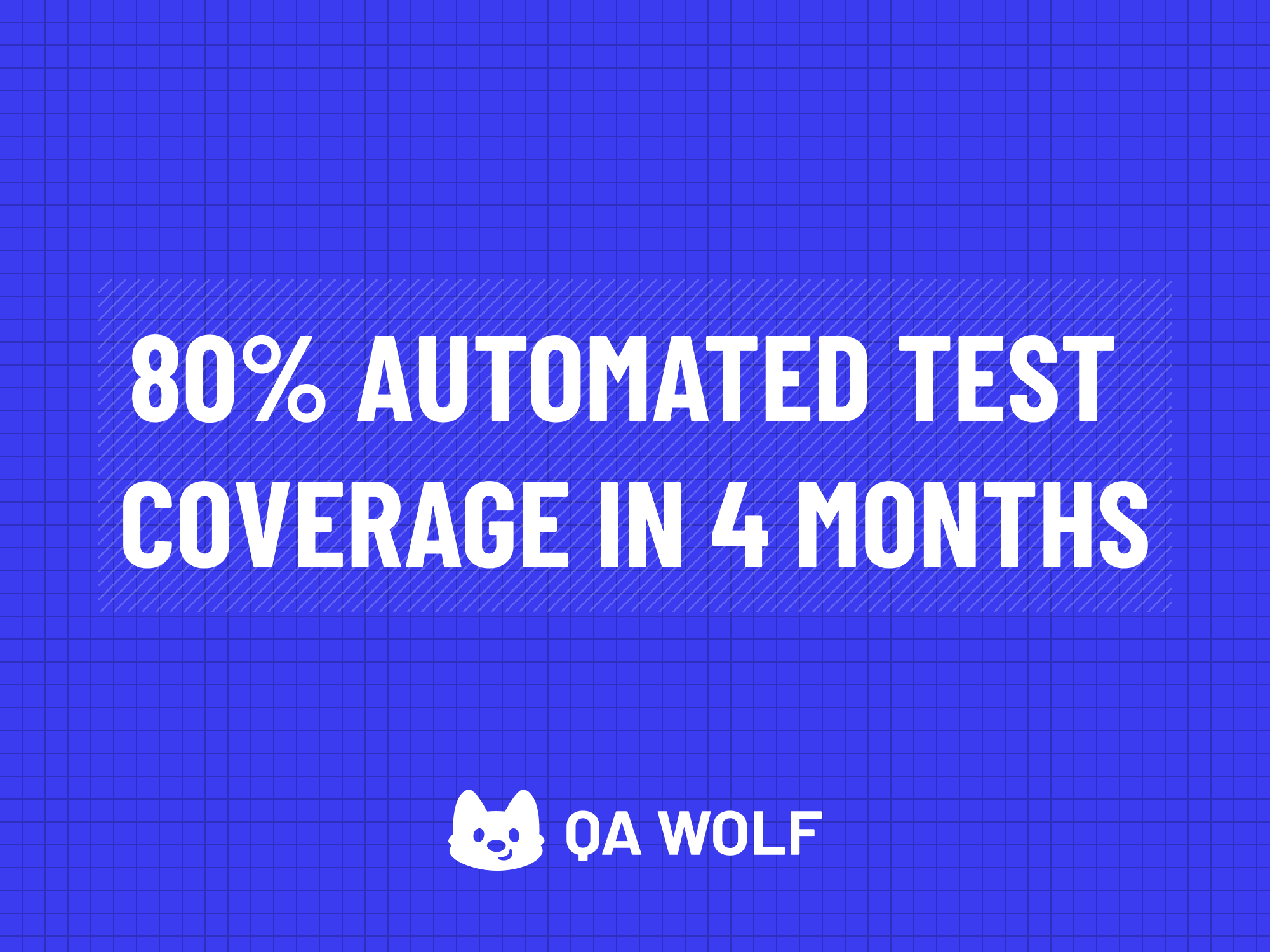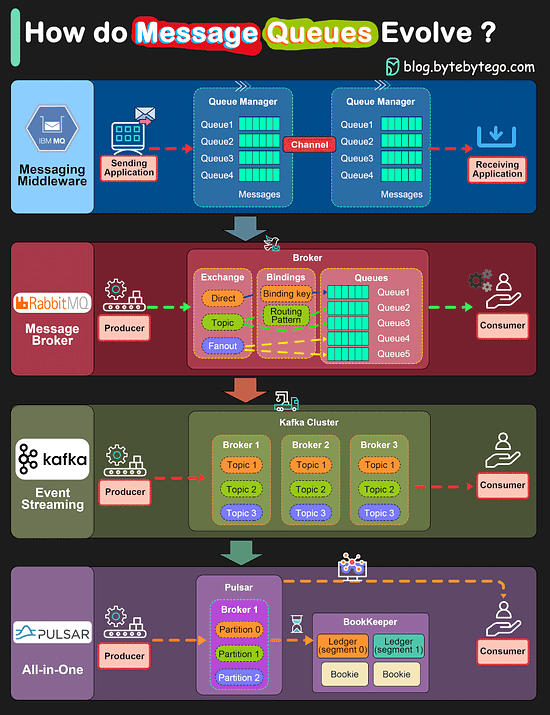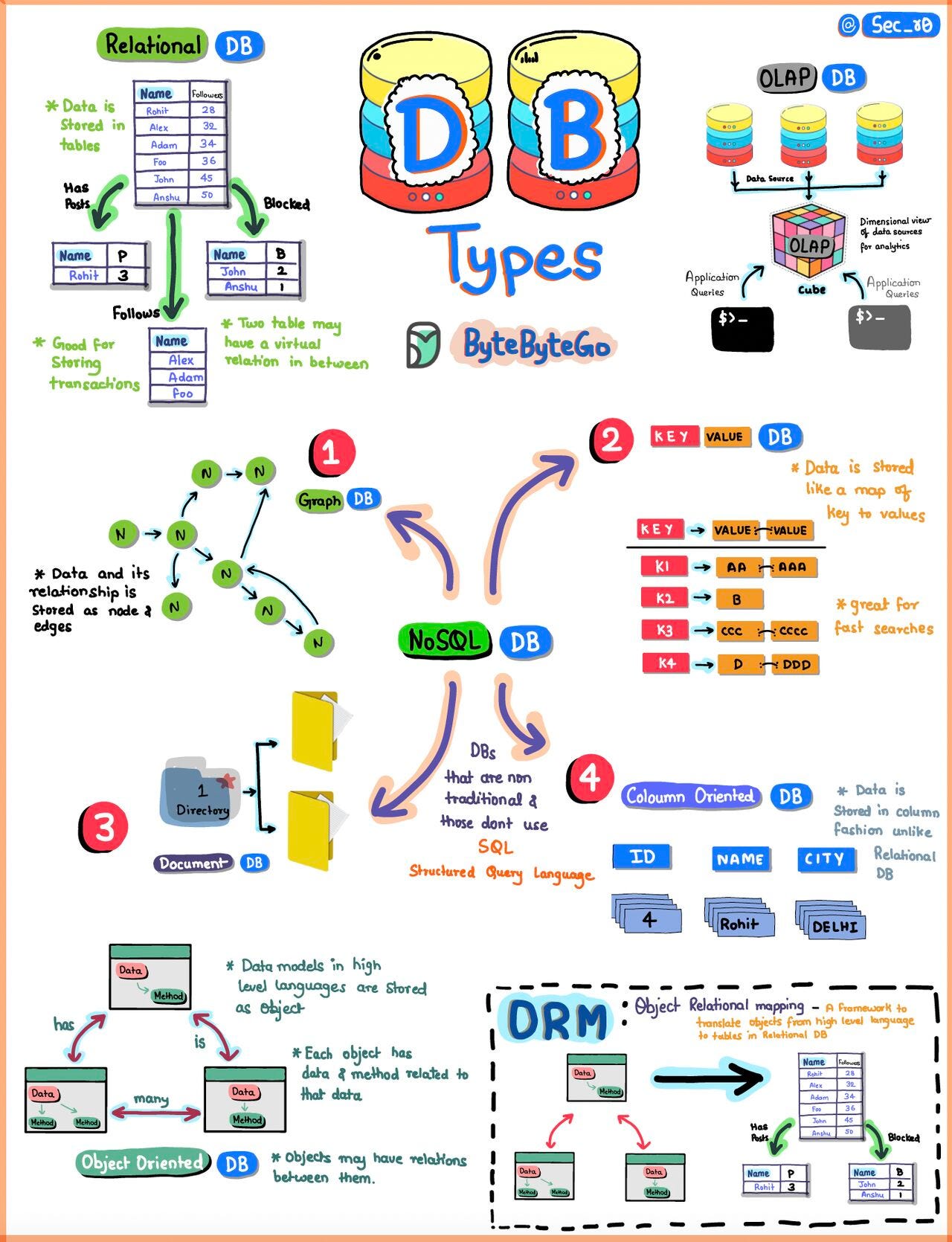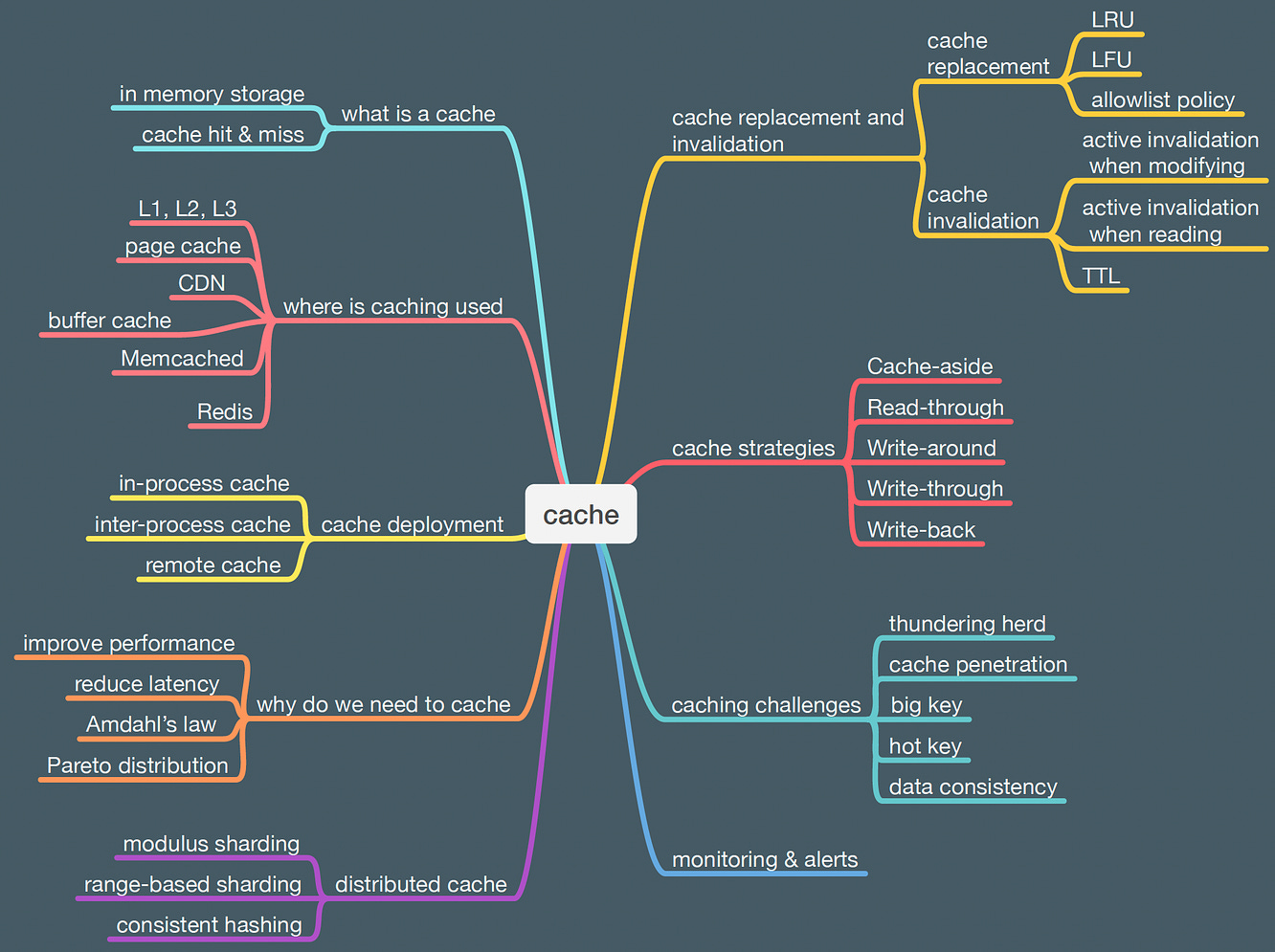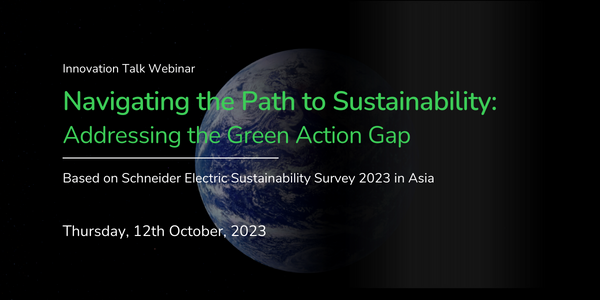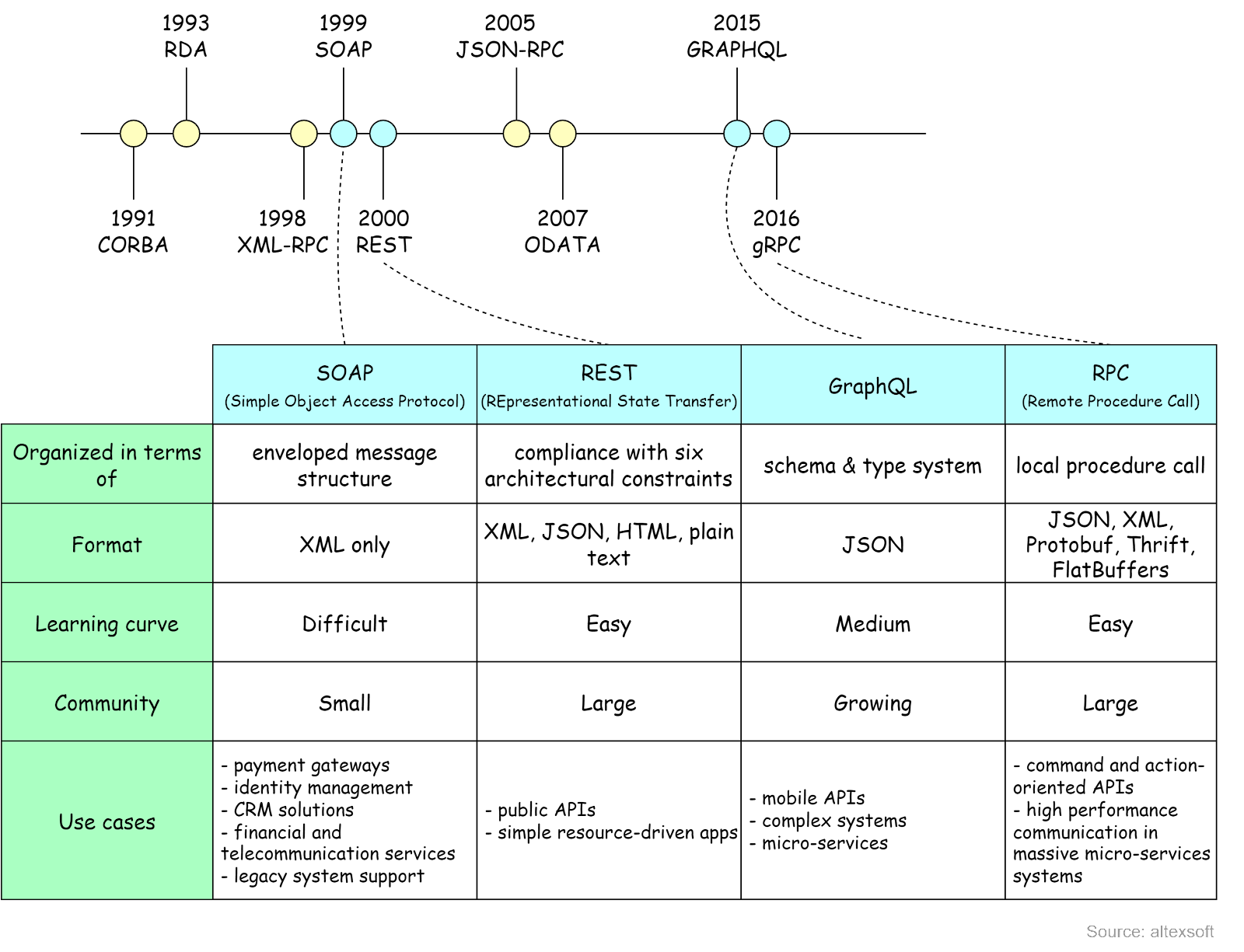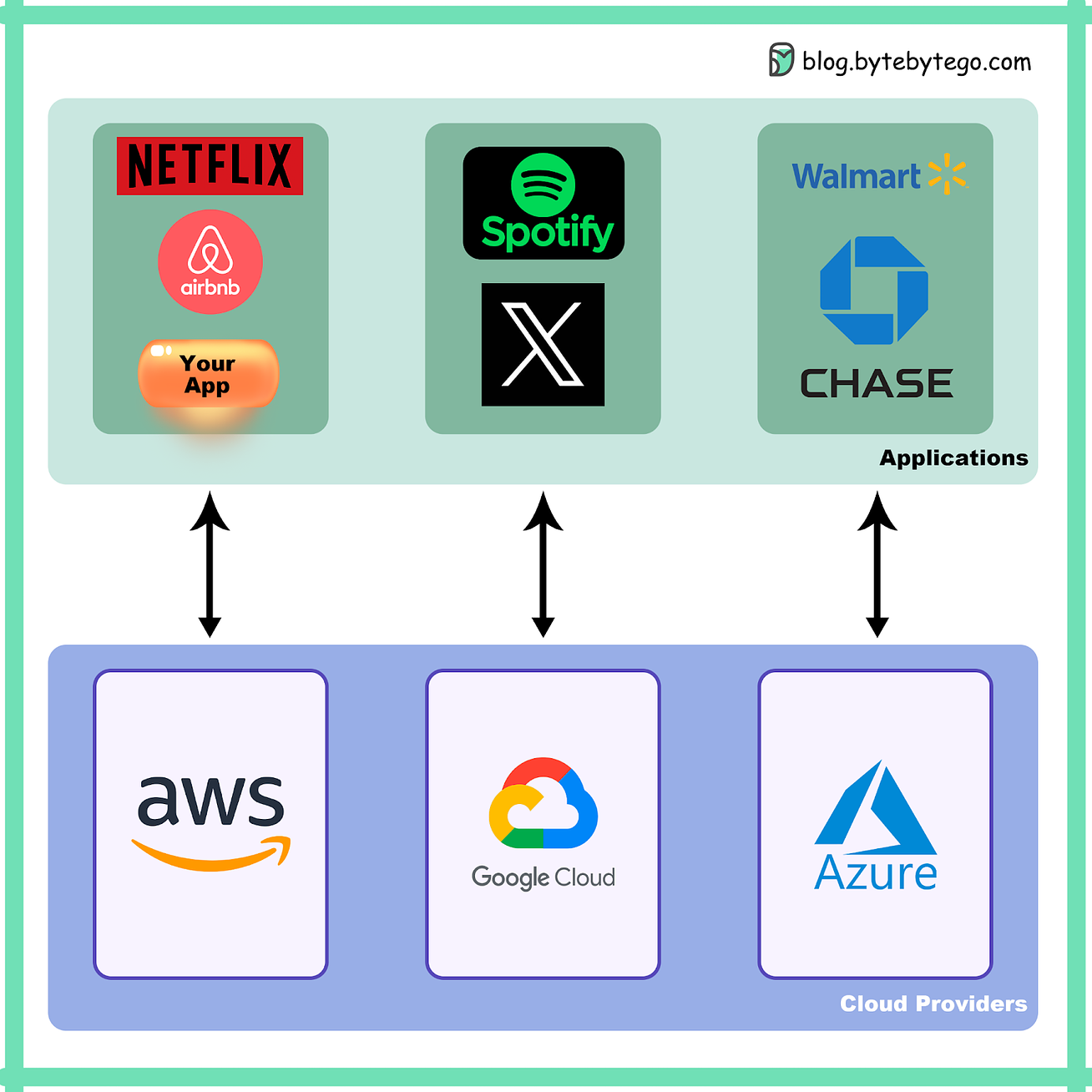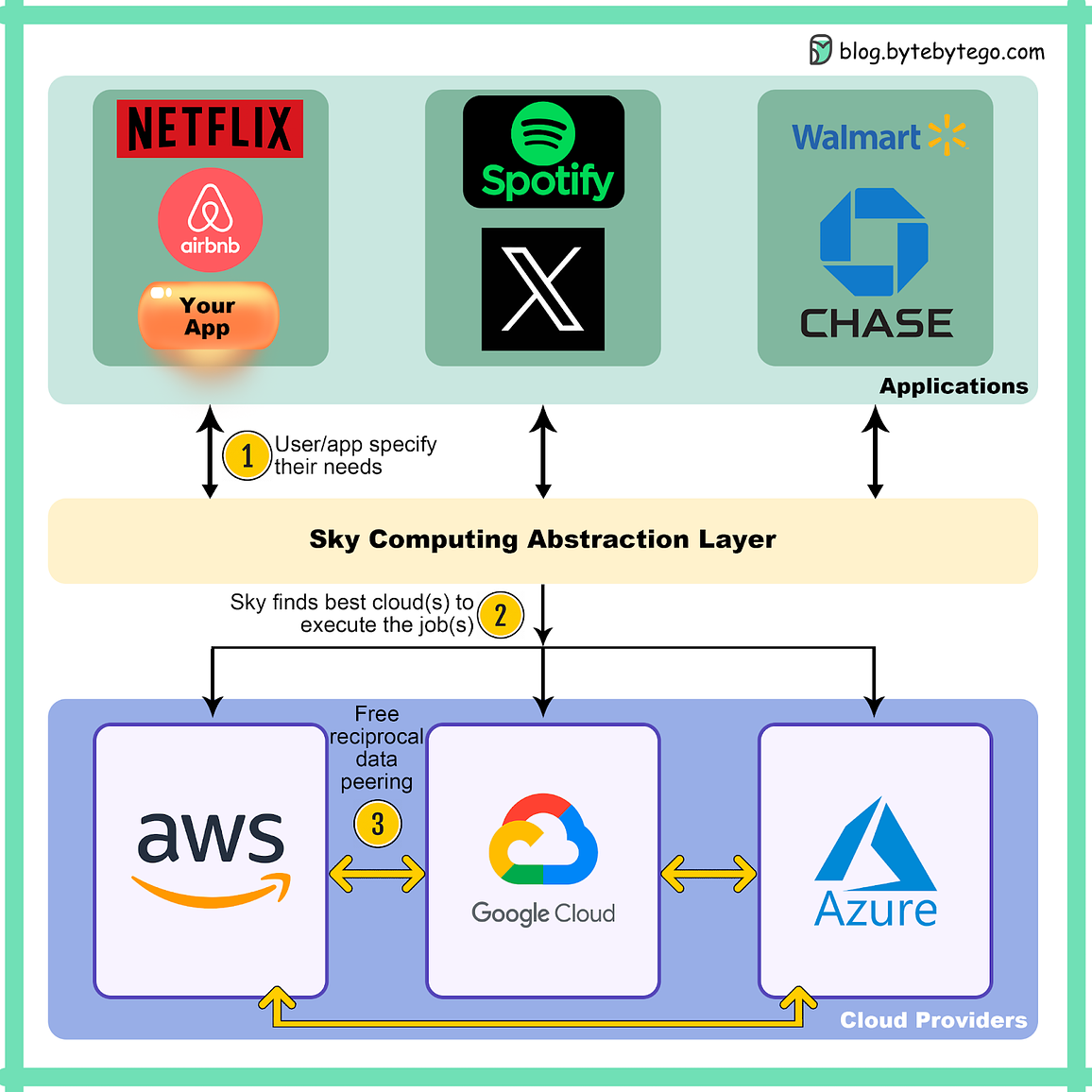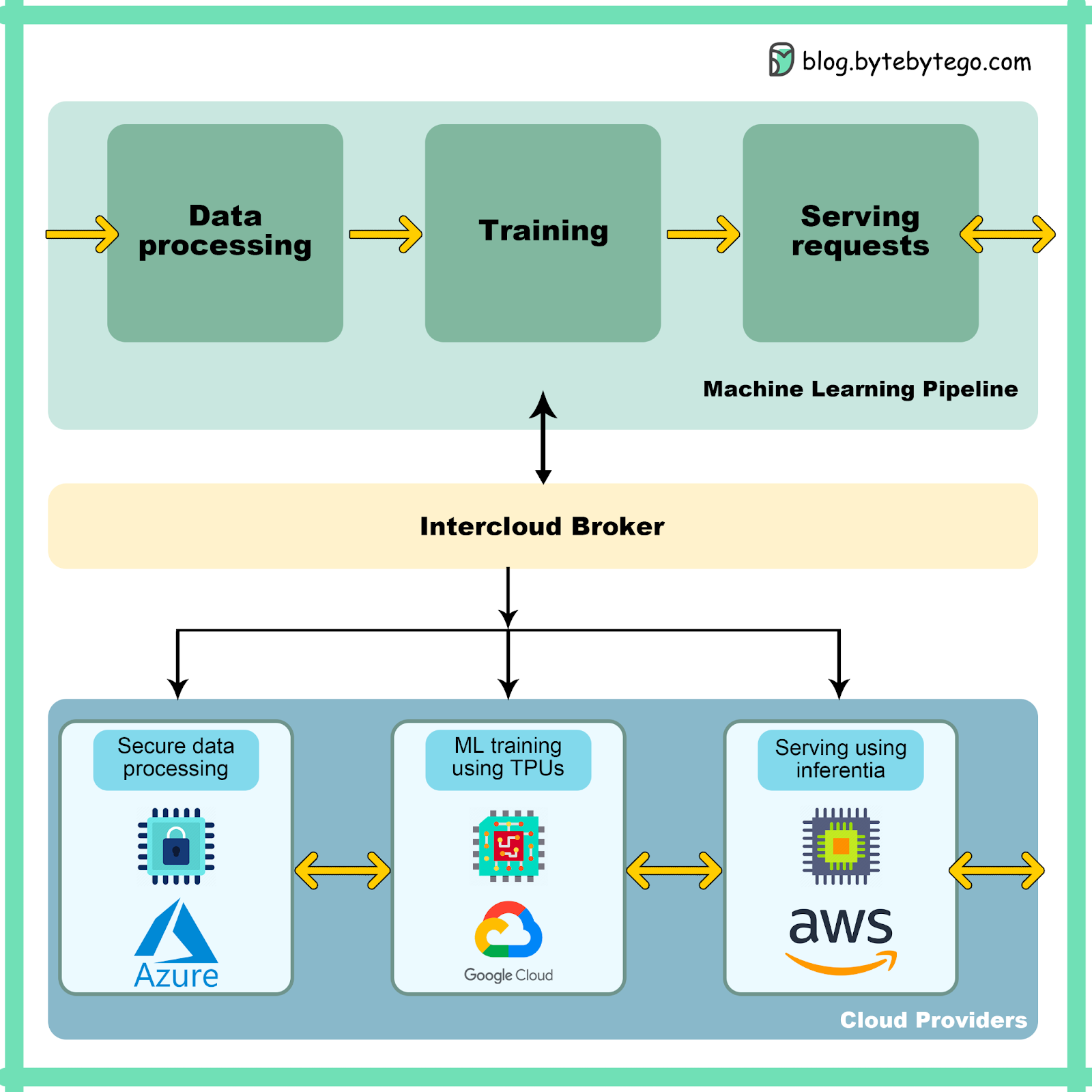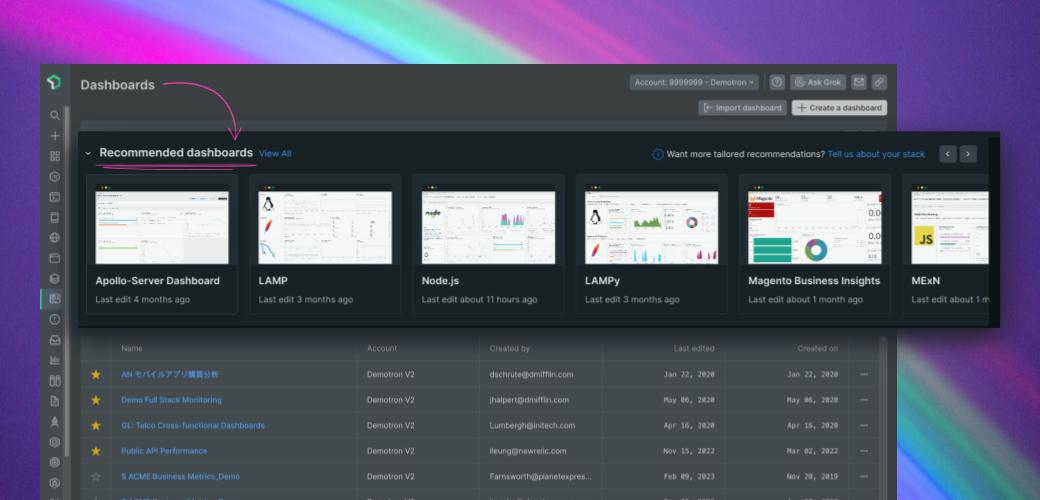Archives
- By thread 5362
-
By date
- June 2021 10
- July 2021 6
- August 2021 20
- September 2021 21
- October 2021 48
- November 2021 40
- December 2021 23
- January 2022 46
- February 2022 80
- March 2022 109
- April 2022 100
- May 2022 97
- June 2022 105
- July 2022 82
- August 2022 95
- September 2022 103
- October 2022 117
- November 2022 115
- December 2022 102
- January 2023 88
- February 2023 90
- March 2023 116
- April 2023 97
- May 2023 159
- June 2023 145
- July 2023 120
- August 2023 90
- September 2023 102
- October 2023 106
- November 2023 100
- December 2023 74
- January 2024 75
- February 2024 75
- March 2024 78
- April 2024 74
- May 2024 108
- June 2024 98
- July 2024 116
- August 2024 134
- September 2024 130
- October 2024 141
- November 2024 171
- December 2024 115
- January 2025 216
- February 2025 140
- March 2025 220
- April 2025 233
- May 2025 239
- June 2025 303
- July 2025 175
-
[Online Workshop] Maximise observability with New Relic logs
New Relic
 Register for this free online workshop on 26th October at 10 AM BST/ 11 PM CEST to get a comprehensive introduction to understanding and working with logs in New Relic. Explore the different ways to bring your log data to New Relic, take a look at the fast and easy-to-use UI, and learn how to parse, filter, or drop logs to match your needs.
Register for this free online workshop on 26th October at 10 AM BST/ 11 PM CEST to get a comprehensive introduction to understanding and working with logs in New Relic. Explore the different ways to bring your log data to New Relic, take a look at the fast and easy-to-use UI, and learn how to parse, filter, or drop logs to match your needs.
With hands-on labs in a sandbox environment, you’ll get to:
-
Search log data with ease and speed.
-
Work with partitions and AI log patterns.
-
Troubleshoot errors in applications and trace data.
-
Create charts and dashboards to share with teams.
-
Set up alert conditions for problems you want to prevent.
Register now Need help? Let's get in touch.



This email is sent from an account used for sending messages only. Please do not reply to this email to contact us—we will not get your response.
This email was sent to info@learn.odoo.com Update your email preferences.
For information about our privacy practices, see our Privacy Policy.
Need to contact New Relic? You can chat or call us at +44 20 3859 9190.
Strand Bridge House, 138-142 Strand, London WC2R 1HH
© 2023 New Relic, Inc. All rights reserved. New Relic logo are trademarks of New Relic, Inc
Global unsubscribe page.
by "New Relic" <emeamarketing@newrelic.com> - 06:07 - 10 Oct 2023 -
-
Gen Z’s mental health is declining, but there are opportunities for early intervention
On Point
Helping tomorrow’s workforce
by "McKinsey On Point" <publishing@email.mckinsey.com> - 12:29 - 10 Oct 2023 -
Join us for Adobe Max Online 2023
Adobe
Meet the MAX speakers who will spark your creativity.
The Creative Conference
A free online event Oct 11-12
Connect with the world’s most inspiring creative community.
Join us on an incredible journey of learning and inspiration. Prepare to be captivated by MAX as we bring you incredible keynotes and immersive online sessions. Expand your creative horizons and sign up now.

Sougwen ChungArtist and Researcher

Kode AbdoDigital Artist, Art Director and
Producer, BossLogic
Mikaela Stafford3D Motion Graphic Artist and Creative Director

Dylan MooneyArtist

Unmesh DindaContent Creator and Educator,
PiXimperfect
Anika AggarwalCreative Director and Education
Mentor, Able Head Inc.
Kitiya PalaskasCraft-based Designer and Adobe Express Ambassador, Kitiya Palaskas Studio

Rames HarikrishnasamyDigital Artist, Rames Studios
2023 Diamond sponsors
2023 Platinum sponsors
Creativity for all.Adobe and the Adobe logo are either registered trademarks or trademarks of Adobe in the United States and/or other countries. This is not a comprehensive list of all Adobe trademarks. For a full list, refer to the Adobe List of Trademarks. All other trademarks are the property of their respective owners.
By clicking on some of the links in this email, you might be redirected to forms that will be pre-populated with your contact information.
This is a marketing email from Adobe Systems Software Ireland Limited, 4‑6 Riverwalk, Citywest Business Park, Dublin 24, Ireland.
Click here to unsubscribe or send an unsubscribe request to the postal address above. Please review the Adobe Privacy Policy:
Australia
New Zealand
Indonesia
Malaysia
Philippines
Vietnam
Singapore
India
Hong Kong
To ensure email delivery, add demand@info.adobe.com to your address book, contacts, or safe sender list.
If you have a privacy-related complaint, send it to: privacy@adobe.com
View in browser
by "Adobe Creative Cloud for Business" <demand@info.adobe.com> - 12:06 - 10 Oct 2023 -
White Label Fuel Monitoring Software
White Label Fuel Monitoring Software
A versatile fuel monitoring system that can be tailored to fit any brand or company's fuel sensor, regardless of type or model.
A versatile fuel monitoring system that can be tailored to fit any brand or company's fuel sensor, regardless of type or model.
Catch a glimpse of what our software has to offer

99% Fuel Accuracy
Our advanced algorithm provides you with accurate details of the fuel fill, fuel drain, fuel consumption, and fuel wastage due to vehicle idling.

Real-time Fuel Monitoring
Monitors fuel usage and fuel level data for each vehicle in your fleet. This helps you to identify inefficiencies and reduce fuel costs.

Instant Fuel Drop Alerts
Get real-time alerts with vehicle details and exact location as soon as the system senses a sudden drop or rise in the fuel level.

Precise Fill-drain Reports
Fleet owners are provided with a detailed report of fuel-filled and fuel drained with precise date, time, and location.
Learn how our fuel monitoring software can help your business grow

Uffizio Technologies Pvt. Ltd., 4th Floor, Metropolis, Opp. S.T Workshop, Valsad, Gujarat, 396001, India
by "Sunny Thakur" <sunny.thakur@uffizio.com> - 08:00 - 9 Oct 2023 -
Update: The Remote Connect Virtual Conference event platform is now live! Sign up today to see the full agenda
Update: The Remote Connect Virtual Conference event platform is now live! Sign up today to see the full agenda
Customize your schedule, secure seats at exclusive events, and see the full schedule now.We are excited to announce that the Remote Connect 2023 Virtual Conference event agenda is now live!
After you register for your free virtual you can now login, check out the full event schedule, browse practical masterclass sessions, AMAs with global HR leaders, and exclusive co-founder Q&As to customize your learning experience.




Get your free virtual pass and join the global movement shaping the future of work.

Need Help?
We're Here for You!Search over 1,500 articles, visit our Help Center.
Live Chat for direct help inside your Remote dashboard.
Prefer a personal touch? Schedule a call with an expert.





You received this email because you are subscribed to Conferences & Events from Remote Technology, Inc.
Update your email preferences to choose the types of emails you receive.
Unsubscribe from all future emailsRemote Technology, Inc.
Copyright © 2023 Remote Technology, Inc. All rights reserved.
18 Bartol St. #1163 San Francisco California
by "Remote" <hello@remote-comms.com> - 06:30 - 9 Oct 2023 -
Employee performance reviews: A leader’s guide
Evaluate this Brought to you by Liz Hilton Segel, chief client officer and managing partner, global industry practices, & Homayoun Hatami, managing partner, global client capabilities
It’s annual performance review season at many companies—a ritual often fraught with uncertainty, controversy, and discontent among managers and staff alike. Research indicates that few employees consider their performance reviews helpful, while several employers are finding that their sizable investments in performance management are not paying off. Remote work and the increasing use of automation have only intensified the challenges of evaluating and rewarding workers’ output. Here are some guideposts for leaders navigating this rocky landscape.
Many leaders are likely to balk at using smart technologies for performance appraisals. But McKinsey partner Bryan Hancock suggests that rather than substituting for human contact, tools such as generative AI can complement face-to-face discussions. “One of my personal favorite uses for generative AI on the people front is actually for performance reviews,” he says. “Hear me out: I don’t want generative AI actually generating somebody’s performance review. But what if I could hit a button and get a draft? That initial synthesis would help me get more quickly to what I really need to probe for that person’s development and growth.” In turn, the employee being evaluated could use gen AI to visualize and map detailed professional objectives, adds McKinsey senior partner Lareina Yee, noting that the technology offers “a lot that enhances what we’ve been trying to do so laboriously for years.”
That’s the number of core steps that leading organizations take to define the practical behaviors and actions needed to achieve performance objectives. For example, at one company, senior managers served as “performance management champions” by spreading new coaching practices throughout the organization, improving employee engagement and increasing productivity by 15 to 20 percent. Another company implemented a training program to enable its top managers to deliver meaningful feedback; participants reported “significantly higher confidence in their ability to provide feedback and coaching to employees,” according to McKinsey partner Emily Field and coauthor.
That’s McKinsey senior partner Clarisse Magnin-Mallez on receiving and delivering feedback in thoughtful ways. She observes that thorough preparation is essential for providing feedback that helps enhance different aspects of people’s professional lives—their relationships with clients, behavior as leaders, and interactions with teams. And while it’s never easy to give people negative feedback, it can be framed in positive terms, suggests McKinsey senior partner Liz Hilton Segel. “They have seen the world from a different vantage point,” she says. “If you approach the conversation with a mindset that you’re bringing them a new perspective, what can seem like a really difficult conversation to have can be a gift to another person and help them become a more effective manager or leader.”
Numerical rankings of performance have been around since at least the 1970s—and have been the subject of debate for at least as long. While some manufacturing roles may require meeting numerical targets, many knowledge workers resist the use of rating scales that reduce their performance to a single number. In the coming years, leaders may want to focus on capability building, suggests McKinsey senior partner Michael Park: “What’s the percentage of revenues you’re plowing back into your workforce? That’s something I think we’ll see in the next decade: people getting a lot more attuned to their capability-building investment.”
Lead by performing well.
— Edited by Rama Ramaswami, senior editor, New York
Share these insights
Did you enjoy this newsletter? Forward it to colleagues and friends so they can subscribe too. Was this issue forwarded to you? Sign up for it and sample our 40+ other free email subscriptions here.
This email contains information about McKinsey’s research, insights, services, or events. By opening our emails or clicking on links, you agree to our use of cookies and web tracking technology. For more information on how we use and protect your information, please review our privacy policy.
You received this email because you subscribed to the Leading Off newsletter.
Copyright © 2023 | McKinsey & Company, 3 World Trade Center, 175 Greenwich Street, New York, NY 10007
by "McKinsey Leading Off" <publishing@email.mckinsey.com> - 02:41 - 9 Oct 2023 -
Do you hire for skills, experience, or education?
On Point
Accessing an untapped talent pool Brought to you by Liz Hilton Segel, chief client officer and managing partner, global industry practices, & Homayoun Hatami, managing partner, global client capabilities
•
Catching up. A basic skills gap that has resulted from the need for remote learning during the pandemic is seriously affecting companies’ productivity. Students who were in virtual classrooms missed out on some of the crucial skills developed during in-person learning. As a result, organizations are spending millions to train employees on some of the fundamental skills that many newer workers don’t have—such as using a cash register to make change and making eye contact with visitors, according to managers. [WSJ]
•
Capital gains. Human capital is arguably a company’s most important asset. It’s crucial for employees as well: human capital accounts for roughly two-thirds of an individual’s total wealth, according to McKinsey Global Institute (MGI) research shared by Sven Smit, chair of MGI and the firm’s insights and ecosystems work, and coauthors. Companies that provide the most training for their employees, that create the most opportunities for internal career growth, and that have the highest scores for organization health stand apart from their peers and develop upwardly mobile workers.
•
STAR power. Employers that move beyond degrees alone and focus on skills-based hiring can tap into a broader and more diverse set of applicants who are skilled through alternative routes (STARs). This in turn can lead to career opportunities for employees and a real competitive advantage for companies. Research shows that hiring for skills is five times more predictive of job performance than hiring for education. To learn more about the benefits of employee skill development, see the latest edition of the McKinsey Quarterly Five Fifty.
— Edited by Drew Holzfeind, editor, Chicago
This email contains information about McKinsey's research, insights, services, or events. By opening our emails or clicking on links, you agree to our use of cookies and web tracking technology. For more information on how we use and protect your information, please review our privacy policy.
You received this email because you subscribed to the On Point newsletter.
Copyright © 2023 | McKinsey & Company, 3 World Trade Center, 175 Greenwich Street, New York, NY 10007
by "McKinsey On Point" <publishing@email.mckinsey.com> - 12:05 - 9 Oct 2023 -
1st Page on Google
Hi,
I found your detail on Google.com and I have looked at your website and realized your website is a great design but your website ranking is not good for all search engines Google, AOL, Yahoo, and Bing.
We can place your website on Google’s 1st Page. Yahoo, AOL, Bing. Etc...
I'd be happy to send some of our SEO samples & price list, if you'd like to assess our work.
Kind Regards,Mike SmithBusiness Development Manager******************************************************************
by "Mike Smith" <seomaxpowersolution@outlook.com> - 09:35 - 8 Oct 2023 -
The week in charts
The Week in Charts
Economic empowerment, US consumer spending, and more Share these insights
Did you enjoy this newsletter? Forward it to colleagues and friends so they can subscribe too. Was this issue forwarded to you? Sign up for it and sample our 40+ other free email subscriptions here.
This email contains information about McKinsey's research, insights, services, or events. By opening our emails or clicking on links, you agree to our use of cookies and web tracking technology. For more information on how we use and protect your information, please review our privacy policy.
You received this email because you subscribed to The Week in Charts newsletter.
Copyright © 2023 | McKinsey & Company, 3 World Trade Center, 175 Greenwich Street, New York, NY 10007
by "McKinsey Week in Charts" <publishing@email.mckinsey.com> - 03:08 - 7 Oct 2023 -
EP80: Explaining 8 Popular Network Protocols in 1 Diagram
EP80: Explaining 8 Popular Network Protocols in 1 Diagram
This week’s system design refresher: Is Docker Still Relevant? (Youtube video) Explaining 8 Popular Network Protocols in 1 Diagram IBM MQ -> RabbitMQ -> Kafka ->Pulsar: How do message queue architectures evolve? What is a database? What are some common types of databases? Forwarded this email? Subscribe here for moreThis week’s system design refresher:
Is Docker Still Relevant? (Youtube video)
Explaining 8 Popular Network Protocols in 1 Diagram
IBM MQ -> RabbitMQ -> Kafka ->Pulsar: How do message queue architectures evolve?
What is a database? What are some common types of databases?
Study: Performance Metrics Of The Best Startups, Enterprises & Mid-Size Engineering Orgs (Sponsored)
"Essential insights into how engineering teams continue to evolve” — Nathen Harvey, Head of Google's DORA team
LinearB’s new 2023 Software Engineering Benchmarks Report is out! This analysis of 3.6 million pull requests from 2,000+ development teams across 64 countries explores benchmarks for additional critical engineering metrics and presents key findings based on organization size and location!
Here are a few insights from the study:
Startups and scale-ups deploy code 18% faster than enterprises.
Enterprises have an average deploy time 2x higher than startups and scaleups.
Europe has a 28% shorter deploy time than the rest of the world.
Grab your free copy right here 👇
2023 Software Engineering Benchmarks
How does Docker Work? Is Docker still relevant?
Docker's architecture comprises three main components:
Docker Client
This is the interface through which users interact. It communicates with the Docker daemon.Docker Host
Here, the Docker daemon listens for Docker API requests and manages various Docker objects, including images, containers, networks, and volumes.Docker Registry
This is where Docker images are stored. Docker Hub, for instance, is a widely-used public registry.
Explaining 8 Popular Network Protocols in 1 Diagram
Network protocols are standard methods of transferring data between two computers in a network.
HTTP (HyperText Transfer Protocol)
HTTP is a protocol for fetching resources such as HTML documents. It is the foundation of any data exchange on the Web and it is a client-server protocol.HTTP/3
HTTP/3 is the next major revision of the HTTP. It runs on QUIC, a new transport protocol designed for mobile-heavy internet usage. It relies on UDP instead of TCP, which enables faster web page responsiveness. VR applications demand more bandwidth to render intricate details of a virtual scene and will likely benefit from migrating to HTTP/3 powered by QUIC.HTTPS (HyperText Transfer Protocol Secure)
HTTPS extends HTTP and uses encryption for secure communications.WebSocket
WebSocket is a protocol that provides full-duplex communications over TCP. Clients establish WebSockets to receive real-time updates from the back-end services. Unlike REST, which always “pulls” data, WebSocket enables data to be “pushed”. Applications, like online gaming, stock trading, and messaging apps leverage WebSocket for real-time communication.TCP (Transmission Control Protocol)
TCP is is designed to send packets across the internet and ensure the successful delivery of data and messages over networks. Many application-layer protocols build on top of TCP.UDP (User Datagram Protocol)
UDP sends packets directly to a target computer, without establishing a connection first. UDP is commonly used in time-sensitive communications where occasionally dropping packets is better than waiting. Voice and video traffic are often sent using this protocol.SMTP (Simple Mail Transfer Protocol)
SMTP is a standard protocol to transfer electronic mail from one user to another.FTP (File Transfer Protocol)
FTP is used to transfer computer files between client and server. It has separate connections for the control channel and data channel.
😘Kiss bugs goodbye with fully automated end-to-end test coverage (Sponsored)
QA Wolf gets web apps to 80% automated end-to-end test coverage in just 4 months. They are a tech-enabled service that creates and maintains your test suite in open-source Playwright (no vendor lock-in, you own the code) and provides unlimited parallel test runs on their infrastructure.
What's better is QA Wolf offers test coverage at a significantly lower cost than trying to build, run, and maintain it in-house. They have multiple case studies of customers saving at least $200k/year in QA engineering and infrastructure costs. Schedule a demo to learn more.PS: QA Wolf has a 4.8/5 🌟rating on G2
IBM MQ -> RabbitMQ -> Kafka ->Pulsar: How do message queue architectures evolve?
IBM MQ
IBM MQ was launched in 1993. It was originally called MQSeries and was renamed WebSphere MQ in 2002. It was renamed to IBM MQ in 2014. IBM MQ is a very successful product widely used in the financial sector. Its revenue still reached 1 billion dollars in 2020.
RabbitMQ
RabbitMQ architecture differs from IBM MQ and is more similar to Kafka concepts. The producer publishes a message to an exchange with a specified exchange type. It can be direct, topic, or fanout. The exchange then routes the message into the queues based on different message attributes and the exchange type. The consumers pick up the message accordingly.Kafka
In early 2011, LinkedIn open sourced Kafka, which is a distributed event streaming platform. It was named after Franz Kafka. As the name suggested, Kafka is optimized for writing. It offers a high-throughput, low-latency platform for handling real-time data feeds. It provides a unified event log to enable event streaming and is widely used in internet companies.Kafka defines producer, broker, topic, partition, and consumer. Its simplicity and fault tolerance allow it to replace previous products like AMQP-based message queues.
Pulsar
Pulsar, developed originally by Yahoo, is an all-in-one messaging and streaming platform. Compared with Kafka, Pulsar incorporates many useful features from other products and supports a wide range of capabilities. Also, Pulsar architecture is more cloud-native, providing better support for cluster scaling and partition migration, etc.There are two layers in Pulsar architecture: the serving layer and the persistent layer. Pulsar natively supports tiered storage, where we can leverage cheaper object storage like AWS S3 to persist messages for a longer term.
Over to you: which message queues have you used?
What is a database? What are some common types of databases?
First off, what's a database? Think of it as a digital playground where we organize and store loads of information in a structured manner. Now, let's shake things up and look at the main types of databases.
Relational DB: Imagine it's like organizing data in neat tables. Think of it as the well-behaved sibling, keeping everything in order.
OLAP DB: Online Analytical Processing (OLAP) is a technology optimized for reporting and analysis purposes.
NoSQL DBs: These rebels have their own cool club, saying "No" to traditional SQL ways. NoSQL databases come in four exciting flavors:Graph DB: Think of social networks, where relationships between people matter most. It's like mapping who's friends with whom.
Key-value Store DB: It's like a treasure chest, with each item having its unique key. Finding what you need is a piece of cake.
Document DB: A document database is a kind of database that stores information in a format similar to JSON. It's different from traditional databases and is made for working with documents instead of tables.
Column DB: Imagine slicing and dicing your data like a chef prepping ingredients. It's efficient and speedy.
Over to you: So, the next time you hear about databases, remember, it's a wild world out there - from orderly tables to rebellious NoSQL variants! Which one is your favorite? Share your thoughts!
Latest articles
Here are the latest articles you may have missed:
To receive all the full articles and support ByteByteGo, consider subscribing:
Like
Comment
Restack
© 2023 ByteByteGo
548 Market Street PMB 72296, San Francisco, CA 94104
Unsubscribe
by "ByteByteGo" <bytebytego@substack.com> - 11:37 - 7 Oct 2023 -
Building an empowered workforce with gen AI
Plus, raising the bar for sustainable and inclusive growth Gen AI may be in its nascent stages of development, but the technology is only going to get more intelligent. How can organizations do more than just “keep up”? What strategies, structures, and talent management approaches will business leaders need to adopt to prepare their organizations for a gen-AI-driven future? In this month’s first featured story, McKinsey’s Sandra Durth, Bryan Hancock, Dana Maor, and Alex Sukharevsky explain that gen AI can be a powerful tool for employee empowerment if business leaders think broadly about how gen AI could affect their organizations—and people—day to day. In our second featured story, Kweilin Ellingrud and Saurabh Sanghvi discuss the importance of upskilling, reskilling, and training to empower the global workforce with the rise of gen AI. Other highlights in this month’s issue include the following topics:
•
what it would take to raise minimum living standards and get on a net-zero path
•
the six worker archetypes present in every organization
•
how companies can play offense in the net-zero transition despite uncertainty
•
the unprecedented mental health issues facing today’s teens

From poverty to empowerment: Raising the bar for sustainable and inclusive growth
What would it take to raise minimum living standards and get on a net-zero path in this decade? Our research explores twin ambitions for people and the planet.
Advance the continuum of progress
Some employees are destroying value. Others are building it. Do you know the difference?
More than half of employees report being relatively unproductive at work. New research into six types of employees shows how companies can re-engage workers while amplifying the impact of star performers.
Address the challenge
Full throttle on net zero: Creating value in the face of uncertainty
To thrive amid shocks to the net-zero economy, leaders are shifting strategies to position themselves to win when the skies clear up.
Make bold moves
Getting to the bottom of the teen mental health crisis
From identifying the effects of social media and the COVID-19 pandemic, to overcoming stigma and expanding accessibility to care, there’s lots to unpack around teen mental health. How do we help tomorrow’s workforce today?
Think creatively
Gen AI in high gear: Mercedes-Benz leverages the power of ChatGPT
Philipp Skogstad, CEO of Mercedes-Benz R&D North America, shares the story of bringing generative AI to 900,000 beta testers and discusses the vision, impact, challenges, and path forward for generative AI applications in the automotive sector.
Drive change
On the cusp of the next payments era: Future opportunities for banks
The 2023 McKinsey Global Payments Report shines a light on a changing industry and explains how banks and others can capitalize on new dynamics.
Make better decisions
McKinsey Explainers
Find direct answers to complex questions, backed by McKinsey’s expert insights.
Learn more
McKinsey Themes
Browse our essential reading on the topics that matter.
Get up to speed
McKinsey on Books
Explore this month’s best-selling business books prepared exclusively for McKinsey Publishing by Circana.
See the lists
McKinsey Chart of the Day
See our daily chart that helps explain a changing world—as we strive for sustainable, inclusive growth.
Dive in
McKinsey Classics
To learn how to turn your frontline managers into winning leaders and your front line into winning workers, read our 2009 classic, “Unlocking the potential of frontline managers.”
Rewind
The Daily Read
— Edited by Eleni Kostopoulos, managing editor, New York
Share these insights
Did you enjoy this newsletter? Forward it to colleagues and friends so they can subscribe too. Was this issue forwarded to you? Sign up for it and sample our 40+ other free email subscriptions here.
This email contains information about McKinsey's research, insights, services, or events. By opening our emails or clicking on links, you agree to our use of cookies and web tracking technology. For more information on how we use and protect your information, please review our privacy policy.
You received this email because you are a registered member of our Monthly Highlights newsletter.
Copyright © 2023 | McKinsey & Company, 3 World Trade Center, 175 Greenwich Street, New York, NY 10007
by "McKinsey Highlights" <publishing@email.mckinsey.com> - 11:33 - 7 Oct 2023 -
Gen AI: The devil is in the data
The CEO Shortlist
Four new insights Curated by Liz Hilton Segel, chief client officer and managing partner, global industry practices, & Homayoun Hatami, managing partner, global client capabilities
Heavy hangs the head and all that. We understand the challenges of the top job, and we’re committed to helping CEOs—both present and future—do the best jobs they can. Twice monthly, we offer four articles and reports that are must-reads for people across the workforce—particularly C-level execs. In this edition, we look at seven things you can do today to get to net zero, how to put data to work in scaling generative AI, and more. We hope you enjoy the read.
—Liz and Homayoun
Just do it. CEOs are waiting (and waiting) for the perfect energy transition playbook. But certainty is an unaffordable luxury. Our experts’ recommendation is to just get on with it: leaders know enough now to make six no-regrets moves to create value in the net-zero transition.
Ah-ooo-ga: What’s that sound coming through the fog? Why, it’s Full throttle on net zero: Creating value in the face of uncertainty, by Laura Corb, Anna Granskog, Tomas Nauclér, and Daniel Pacthod.More than zero. Everybody thinks zero-based budgeting is just a euphemism for radical cost cuts. But there’s much more to it than that. Done right, zero-basing can give leaders insights into costs, yes, but also into growth and capital allocation.
Dig deeper than the bottom line with Unlocking operational evolution: The zero-basing philosophy, by Denis Fomin, Steve Frazier, and Carey Mignerey.Data is gold. We’ve been singing this song for years. But the message is all the more urgent as generative AI tools—reliant on easily accessible, organized data—take over the business and tech conversation. The problem? Seventy-two percent of leading organizations cite data management as one of the main roadblocks in scaling AI.
Help is on the way: check out the seven actions data leaders can take in The data dividend: Fueling generative AI, a new article by Joe Caserta, Holger Harreis, Kayvaun Rowshankish, Nikhil Srinidhi, and Asin Tavakoli.The gen AI glass is half full—or even three-quarters. You might have read one or two (or 15) think pieces about the vast opportunity for early adopters of generative AI. But not everyone sees the future as rosy. Many see gen AI as a harbinger, not of exciting growth but of job replacement and loss. It’s up to senior leaders to build a compelling narrative for the use of gen AI, with concrete examples of how the tools can enhance the employee experience.
Calm your employees’ anxieties with actionable insights from The organization of the future: Enabled by gen AI, driven by people, by Sandra Durth, Bryan Hancock, Dana Maor, and Alex Sukharevsky.We hope you find our new focus on CEOs inspiring and helpful. See you in two weeks with four more McKinsey ideas for the CEO and others in the C-suite.
Share these insights
This email contains information about McKinsey’s research, insights, services, or events. By opening our emails or clicking on links, you agree to our use of cookies and web tracking technology. For more information on how we use and protect your information, please review our privacy policy.
You received this email because you subscribed to The CEO Shortlist newsletter.
Copyright © 2023 | McKinsey & Company, 3 World Trade Center, 175 Greenwich Street, New York, NY 10007
by "McKinsey CEO Shortlist" <publishing@email.mckinsey.com> - 02:08 - 6 Oct 2023 -
Trash in space is a growing problem
On Point
Principles of sustainable space operations Brought to you by Liz Hilton Segel, chief client officer and managing partner, global industry practices, & Homayoun Hatami, managing partner, global client capabilities
•
Outshining the stars. One satellite launched in November 2022 is now brighter than some of the most dazzling stars in the entire Milky Way, according to a study in Nature released earlier this month. To satisfy global demand for broadband access, companies have launched thousands of satellites, with multiple nations planning to develop mega constellations of their own. Astronomers are concerned that satellite constellations in low-Earth orbit could hinder their ability to observe the night sky. [NYT]
•
A growing problem. Investment in space exploration is booming. In 2021, private sector funding in space-related companies topped $10 billion, a roughly tenfold increase over the past decade, McKinsey senior partner Ryan Brukardt and colleagues share. But with increasing space activity also comes more space junk—fragments from inactive satellites, rockets, missiles, and other stuff that get left behind. There are nearly 30,000 pieces of junk floating in space. As this waste accumulates, it poses a growing challenge to space travel and exploration.
— Edited by Belinda Yu, editor, Atlanta
This email contains information about McKinsey's research, insights, services, or events. By opening our emails or clicking on links, you agree to our use of cookies and web tracking technology. For more information on how we use and protect your information, please review our privacy policy.
You received this email because you subscribed to the On Point newsletter.
Copyright © 2023 | McKinsey & Company, 3 World Trade Center, 175 Greenwich Street, New York, NY 10007
by "McKinsey On Point" <publishing@email.mckinsey.com> - 10:07 - 5 Oct 2023 -
อย่าพลาดการสัมมนาผ่านเว็บ เพื่อค้นพบแนวทางปฏิบัติทางธุรกิจที่ยั่งยืน
Schneider Electric
Addressing the Green Action Gapค้นพบว่าผู้นำในอุตสาหกรรมเชื่อม Green gap ได้อย่างไรเรียน Abul
ที่ชไนเดอร์ อิเล็คทริค เรามุ่งมั่นที่จะขับเคลื่อนความยั่งยืนและช่วยให้ธุรกิจประสบ
ความสำเร็จ เนื่องจากเรารู้ว่าเราไม่สามารถทำคนเดียวได้ นั่นเป็นเหตุผลที่เราอยาก
เชิญคุณเข้าร่วมการสัมมนาผ่านเว็บเรื่อง "การนำทางสู่ความยั่งยืน: การจัดการ
กับ Green Gap" ในเดือนตุลาคมนี้
ในการสัมมนาผ่านเว็บนี้ ทีมผู้เชี่ยวชาญของเราจะแบ่งปันข้อมูลเชิงลึกอันมีค่า
ตัวอย่างจากโลกแห่งความเป็นจริง และโซลูชันที่นำไปใช้ได้จริงซึ่งคุณสามารถนำไป
ใช้ภายในองค์กรของคุณเอง
เข้าร่วมกับเราและเสริมพลังให้ธุรกิจของคุณเติบโตอย่างยั่งยืนพร้อมทั้งมีส่วนร่วมใน
การบรรเทาการเปลี่ยนแปลงสภาพภูมิอากาศ
*การสัมมนาผ่านเว็บจะนำเสนอเป็นภาษาอังกฤษ ตัวแทนของเราจะอำนวยความ
สะดวกแก่คุณหากคุณต้องการความช่วยเหลือแบบเรียลไทม์ระหว่างการสัมมนาทาง
เว็บ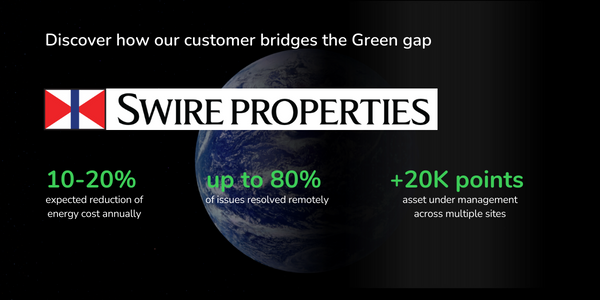
 09:00 - 10:00 น. (UTM+7)วันพฤหัสบดีที่ 12 ตุลาคม 2566
09:00 - 10:00 น. (UTM+7)วันพฤหัสบดีที่ 12 ตุลาคม 2566 Webex Applicationการสัมมนาผ่านเว็บโฮสต์บนแอปพลิเคชัน Webex
Webex Applicationการสัมมนาผ่านเว็บโฮสต์บนแอปพลิเคชัน Webex+ Lifecycle Services From energy and sustainability consulting to optimizing the life cycle of your assets, we have services to meet your business needs. Schneider Electric
46 Rungrojthanakul Building. 1st, 10th, 11th Floor, Ratchadapisek Road. Huaykwang
Bangkok - 10310, Thailand
Phone +662 617 5555© 2023 Schneider Electric, All Rights Reserved. Schneider Electric trademarks are owned by Schneider Electric or its affiliated companies in the United States and other countries. All other trademarks are property of their respective owners.
by "Schneider Electric" <reply@se.com> - 10:02 - 5 Oct 2023 -
No More Vendor Lock-In? The Rise of Sky Computing
No More Vendor Lock-In? The Rise of Sky Computing
Cloud computing has unleashed a wave of innovation, powering industry giants like Netflix, Airbnb, and countless others. Yet despite its promise, cloud's full potential remains constrained, locked within vendor-specific silos. What if you could break free from these limitations? Imagine an open sky above the clouds, where your applications can freely soar and shift between clouds at will. This vision is now within reach. The next evolutionary leap beyond cloud computing is showing great promise - welcome to the era of Sky Computing. Forwarded this email? Subscribe here for moreThis is a sneak peek of today’s paid newsletter for our premium subscribers. Get access to this issue and all future issues - by subscribing today.
Latest articles
If you’re not a subscriber, here’s what you missed this month.
To receive all the full articles and support ByteByteGo, consider subscribing:
Cloud computing has unleashed a wave of innovation, powering industry giants like Netflix, Airbnb, and countless others. Yet despite its promise, cloud's full potential remains constrained, locked within vendor-specific silos. What if you could break free from these limitations? Imagine an open sky above the clouds, where your applications can freely soar and shift between clouds at will. This vision is now within reach. The next evolutionary leap beyond cloud computing is showing great promise - welcome to the era of Sky Computing.
In Sky Computing, applications are not bound to any single cloud provider. You can develop cloud-agnostic applications and optimize for performance, cost, latency - on your terms. Initial implementations have already shown the immense benefits, from cutting costs in half to being able to run high-throughput batch workloads across clouds. With open frameworks replacing vendor lock-in, the possibilities are endless. Join us as we explore how Sky Computing works, the promising benefits it unlocks, and how you can start soaring beyond the limits of cloud today.
Sky Computing relies on key technical abstractions that intelligently distribute workloads across diverse cloud environments. Initial open source implementations like SkyPilot and SkyPlane demonstrate the viability of these concepts. They provide a seamless multi-cloud experience, while optimizing for cost, performance and latency based on application needs.
In this issue, we will:
Analyze the incentives for cloud providers and users to participate in this next wave of innovation
Examine how early pioneering innovations in Sky Computing are already demonstrating promising benefits
Outline an action plan for you to start experimenting with these architectures - unlocking the promise of an open sky above the clouds
Cloud Computing Landscape Today
The following illustration shows how most applications use cloud computing today.
The following illustration shows what sky computing promises us and its three main enablers—(1) job specification by apps, (2) inter-cloud abstraction layer, and (3) network peering between the clouds.
Let’s first understand the reasons why many applications depend on one cloud provider.
Why do most applications rely on just one cloud today?
Most cloud applications today utilize one of the major cloud providers. Applications built in this manner are tightly coupled with the underlying cloud provider’s API. In a sense, such applications are silos—they cannot easily transition from one cloud to another. Organizations choose cloud providers—often for multiple years—that serve their current and future needs at a favorable cost. The cloud providers frequently leverage such opportunities to lock in customers they believe will be profitable. Here are some common reasons why many applications opt for a single cloud provider:
Simplicity and ease of management: Using a single cloud provider can streamline the management and operation of an application. Organizations only have to deal with one set of tools, one billing platform, and one set of resources to manage, which can reduce complexity and overhead. For many organizations such as start-ups, keep technical complexity and associated risks in check is imperative for survival.
Cost considerations: Adhering to a single cloud provider can make it easier to predict and control costs. Each cloud provider has its pricing model, and managing multiple providers can be more challenging for optimizing cost efficiency.
Predicting pricing in a cloud provider’s spot market can be challenging due to high price and availability fluctuations. Some models even treat such spot markets as stock exchanges and use those models for prediction. According to one study, Apple spent more than $30 million a month in 2019 at AWS for iCloud storage, based on a multi-year contract between the two companies. Large customers like Apple have substantial leverage to negotiate prices.Often cloud providers can offer subsidized rates for organizations if they commit to staying with the provider for many years. Such deals are seen as a win-win - the customers get their computing done at a competitive price, and the cloud provider secures important long-term customers. However, once agreed-upon, the customer is locked into that specific provider on the agreed-upon terms.
For an organization, architecting an application to run on multiple cloud providers can be n times as costly (where n is the number of clouds supported) in terms of required technical expertise, training, business deal negotiations, and challenges debugging and fixing issues.Integration and compatibility: Cloud providers offer a wide range of services and tools. By using one provider's ecosystem, it's often easier to ensure seamless integration between services, which can improve application performance and reliability.
Service differentiation: Some cloud providers excel in specific areas or industries. If an application has particular requirements that align well with a provider's strengths (e.g., AWS for ARM-based virtual machines for lower cost, Azure for enterprise integration with Microsoft-specific solutions, GCP for globally distributed, transactional Spanner database, etc.), it may make sense to use that provider.
Data gravity: Applications that deal with massive data volumes often find it more efficient to keep their data within one cloud provider's ecosystem due to data transfer costs, latency, and compliance considerations.
Even if a customer did not get a special volume discount, most cloud providers make it harder to move data out (while data ingress rates are often much lower compared to egress). Additionally, artificial throttling limits might be in place to slow egress throughput. For example, a recent study showed that AWS throttled egress data at 5 Gbps.Technical expertise: Teams may have specialized expertise with a specific cloud provider's services and tools, making it more efficient to continue using that provider for new projects.
Some customers operate on very slim profit margins and are highly cost-sensitive. So much so that at times, some applications choose the cheapest data center among many while ignoring redundancy. For example, AWS’s North Virginia’s datacenter is the most affordable for some services, so they only deploy there. However, there is an inherent risk of failure when a data center-wide outage occurs, as has happened in the past. Still, many customers seem to ignore such risks because cloud providers have become very reliable over the years. Some organizations are willing to take this gamble.
An aside: Artificial fault injection to keep the clients honest to the SLA As an interesting aside, Google reports artificially inducing errors to its Chubby locking service so internal customers don’t start believing Chubby has 100% availability. Such practices are not usually employed for public facing services.Vendor Lock-In: Inertia exists in computing as well—as an organization’s footprint grows within a cloud provider, it becomes increasingly difficult to switch providers.
While vendor lock-in can be a concern with a single cloud provider, some organizations prioritize short-term efficiency over long-term flexibility. They may opt to address potential lock-in issues later, once their application matures. However, that moment may never arrive as applications and workloads can become further intertwined with proprietary APIs over time.
An aside: Multi-cloud and Sky computing Some organizations use more than one cloud, either for distinct, unrelated applications or different business units. This strategy is also called multi-cloud. For our discussion, we will consider an application’s ability to freely transition across any cloud as either multi-cloud or sky computing.Ultimately, the decision to use one or multiple cloud providers should be based on the application’s specific needs and goals, as well as the organization's tolerance for complexity and risk.
Why would anyone want Sky Computing?
The obvious question is: why would anyone want Sky Computing to happen? What incentives exist for stakeholders?
Multi-cloud architectures, where applications utilize multiple cloud providers simultaneously, offer several benefits depending on an organization’s specific needs and goals. Here are some of the key incentives and benefits of multi-cloud apps:
Redundancy and high availability: Spreading workloads across multiple cloud providers and regions enhances the application redundancy and high availability. If one cloud provider experiences an outage, the application can seamlessly failover to another, minimizing downtime and ensuring business continuity.
Recent events demonstrate that cloud provider outages happen. Applications that dynamically move workloads between providers can mask an outage.Risk mitigation: Multi-cloud strategies mitigate vendor lock-in risks. Organizations avoid over-reliance on a single provider, reducing vulnerability to changes in pricing, service quality, or strategic shifts by a single provider.
Optimization for specific services: Different cloud providers excel in different areas. By using multiple providers, organizations can choose the best services for each sub-task within their application. For example, one provider may offer superior machine learning solutions while another excels at IoT or analytics services.
There will always be differentiated services among cloud providers. Later we will examine an example ML pipeline where each stage runs on a different cloud.
The following illustration shows a workload with three major phases—data processing, ML training, and client serving. We might figure that Azure’s secure processing service is the best choice for the first phase (data processing), GCP’s TPU processors can give us superior performance per dollar for the second phase (ML training), while we can serve economically using AWS Inferentia service for the third phase (client serving). The output of one phase provides the input to the next by utilizing egress routes. Prototyping confirmed that this approach reduced costs up to 80% and latency up to 60% compared to using a single cloud.
Cost optimization: Multi-cloud deployments allow organizations to optimize costs by selecting the most cost-effective cloud provider for each workload. This can lead to potential cost savings, as different providers may offer better pricing for specific services or regions.
An aside: Sky computing / Multi-cloud provides economic benefits and accelerates innovation. Initial studies (see Skypilot and Skyplane) suggest substantial cost savings using multiple cloud providers, even after taking egress fees into account.Not every organization gets volume discounts—those are reserved for a select few. For others, it often makes sense to move services between cloud providers. Overall costs can still be lower, even after factoring in data egress fees. We will examine those results later in this newsletter.
Spot market price and availability fluctuations also differ among cloud providers—at different times spot markets of different cloud providers might offer better cost performance.
Compliance and data sovereignty: Compliance requirements vary by region and industry. Multi-cloud strategies enable organizations to place data and workloads in specific geographic regions to meet compliance and data sovereignty requirements. For example, some countries in the European Union might demand that data placement and processing of its citizens must happen inside the physical boundaries of the country. A single cloud provider might not have its data center in a specific country. Using another cloud provider for that country can resolve the issue.
Performance optimization: Geographical distribution across cloud providers can improve application performance for users in different parts of the world. Organizations can strategically place resources closer to their end-users to reduce latency and enhance user experience.
Disaster recovery: Multi-cloud architectures can simplify disaster recovery planning. If a disaster affects one provider, failover to another ensures availability.
Innovation and best-of-breed solutions: Organizations can leverage innovations and best-of-breed solutions from multiple providers, staying competitive and capitalizing on emerging technologies.
Flexibility and scalability: Multi-cloud environments offer greater flexibility and scalability. Organizations can scale resources as needed, avoiding the constraints of a single provider's resource limits.
By leveraging sky computing, a customer has the ability to pool resources from multiple cloud providers to get their work done. For example, with GPU shortages, for many ML training sessions, we could combine GPUs from multiple cloud providers to get our work done instead of waiting for the resources to be available.
Negotiating leverage: Using multiple cloud providers may provide negotiating leverage with pricing and service agreements. Competition between providers can lead to better terms for customers.
The decision to adopt a multi-cloud approach should align with an organization's specific goals, requirements, and resources. It's not necessarily the right choice for every application, but it can provide significant advantages in the right circumstances.
Incentives for cloud providers
Cloud providers have incentives to embrace the multi-cloud paradigm, as it can increase customer engagement and revenue opportunities. Here are some of the key incentives and benefits for cloud providers:
Increased market share: When clients adopt a multi-cloud strategy, they are more likely to use services from multiple cloud providers. Cloud providers can capture a larger share of the market by offering services that cater to different aspects of the clients’ multi-cloud architecture.
Revenue diversification: By providing services that support multi-cloud deployments, cloud providers can diversify their revenue streams. This reduces their reliance on any one client or market segment. This makes them more resilient to market fluctuations.
Cross-selling and up-selling: Cloud providers can cross-sell and up-sell additional services to clients who embrace a multi-cloud strategy. For example, they can offer tools and services for managing multi-cloud environments, security solutions, and data integration services to clients. For example, GCP’s Anthos and Azure’s Arc projects are a step in that direction.
Partnerships and ecosystem expansion: Cloud providers can establish partnerships with other cloud providers or technology vendors to create a more extensive ecosystem. These partnerships can lead to joint marketing and revenue-sharing opportunities. For example, GCP’s Anthos collaborates with VMware and HP to enable Anthos across providers.
Customization and flexibility: Offering customizable solutions that cater to a client's multi-cloud needs allows cloud providers to differentiate themselves in the market. Clients often seek providers who can adapt to their unique requirements.
Resource optimization: Cloud providers can optimize their infrastructure and resource allocation based on client demand for multi-cloud solutions. This optimization can lead to cost savings and better resource utilization.
Innovation and competitive advantage: Cloud providers that invest in multi-cloud capabilities and technologies can gain a competitive advantage by staying at the forefront of innovation in this evolving space. This can attract more clients looking for cutting-edge solutions.
It's important to note that while there are benefits for cloud providers, embracing the multi-cloud paradigm also presents challenges, including increased competition and the need to ensure interoperability with other cloud providers. To be successful in this space, cloud providers must continually adapt their offerings to meet the evolving needs of multi-cloud clients and maintain a strong focus on customer satisfaction.
In the ever-evolving cloud market, no single player is too currently big (AWS’s share 32%, Azure’s 22%, and GCP’s 11%.), and smaller providers will be more willing to embrace sky computing than the large players. Once again projects like Anthos and Arc from GCP and Azure are an example for such a phenomenon.
An aside: John McCarthy’s vision of computing becoming a public utility. “Computing may someday be organized as a public utility just as the telephone system is a public utility, … Each subscriber needs to pay only for the capacity he actually uses, but he has access to all programming languages characteristic of a very large system … Certain subscribers might offer service to other subscribers … The computer utility could become the basis of a new and important industry.” A quote by Professor John McCarthy at MIT’s centennial celebration in 1961 John McCarthy (the Turing award winner of 1971 for his contributions to AI) had the vision of computing becoming a public utility where customers could use as much of it as needed and pay only for the time they used the resources. The invention of public cloud circa 2006 popularized part of McCarth’s vision where clouds provide huge resources where customer pay-per-use. However, computing becoming a public utility has yet to be realized. Just like we can plug our devices to wall sockets without worrying which electric company produced the power, we need applications that could use the infra and services without worrying which cloud provider is offering it, as long as that offering meets customer’s needs. Cloud providers might be averse to the idea of them becoming easily replaceable by anyone else. Each large cloud tries hard to differentiate itself by offering something unique—GCP has TPUs (Tensor Processing Unit) that have better cost-performance for ML training, AWS has low cost, ARM-based virtual machines and AWS Inferentia for economical deep learning inference, and Azure has services like secure enclaves for processing sensitive data.Let’s now see how organizations can architect sky computing.
How we will realize Sky Computing
Now let's put our designer hats on. How would we architect Sky Computing to meet our stated goals? There are a few options to meet our stated goals, though only one good choice emerges.
Porting each application to every cloud provider is an impractical m x n solution. With m providers and n applications, each application must conform to every cloud's unique API. For example, Databricks reportedly required many person-years of effort just to port their application to Azure. Only a few large organizations could afford this for a handful of major cloud providers.
Keep reading with a 7-day free trial
Subscribe to
ByteByteGo Newsletterto keep reading this post and get 7 days of free access to the full post archives.A subscription gets you:
An extra deep dive on Thursdays Full archive Many expense it with team's learning budget Like
Comment
Restack
© 2023 ByteByteGo
548 Market Street PMB 72296, San Francisco, CA 94104
Unsubscribe
by "ByteByteGo" <bytebytego@substack.com> - 11:37 - 5 Oct 2023 -
Elevate your observability with four vital Insights from the 2023 Observability Forecast
New Relic
 October 2023
October 2023The business value of observability: Insights from the 2023 Observability Forecast The 2023 Observability Forecast report is now out. Data from 1,700 technology professionals across 15 countries offered insights to help you better understand their observability habits and the impact those have on costs and revenue. In the blog, we will unpack four key findings from the report that show that the return on investment (ROI) in observability is not just beneficial; it's essential.
Learn more  Ready to start rewinding user interactions for faster debugging and to gain insights to craft exceptional apps? New Relic Session Replay now available in Limited Preview and is included as part of New Relic all-in-one observability platform.
Ready to start rewinding user interactions for faster debugging and to gain insights to craft exceptional apps? New Relic Session Replay now available in Limited Preview and is included as part of New Relic all-in-one observability platform.
Skyscanner started as a flight search engine in 2003. Today, the company has millions of travelers relying on its app and website to plan and book their trips each month. Read the case study to find out how Skyscanner retired 12 internal and external systems with New Relic, freeing up engineer time to focus on important tasks—like groundbreaking work on applying SRE reporting principles to mobile.Useful Reads Getting instant observability just got easier. Our dashboards UI now recommends quickstart dashboards that can be personalized based on your stack. Discover and deploy relevant visualizations in seconds.FutureStack London is Calling
Getting instant observability just got easier. Our dashboards UI now recommends quickstart dashboards that can be personalized based on your stack. Discover and deploy relevant visualizations in seconds.FutureStack London is Calling Our FutureStack user conference is coming to London on 14th November with inspiring customer presentations, exciting product updates, and a hands-on workshop. Come and meet Grok, our industry-first new GenAI assistant and learn about what’s new and what’s next from New Relic with exciting announcements around logs, security, infrastructure, unified APM and the developer toolchain.
Our FutureStack user conference is coming to London on 14th November with inspiring customer presentations, exciting product updates, and a hands-on workshop. Come and meet Grok, our industry-first new GenAI assistant and learn about what’s new and what’s next from New Relic with exciting announcements around logs, security, infrastructure, unified APM and the developer toolchain.
So come tap into the expertise of our New Relic engineers while having a little fun to round off the day.
Register today and we look forward to seeing you in November!
New Relic University [Worshop] Proactively monitor availability and performance with New Relic Synthetics
[Worshop] Proactively monitor availability and performance with New Relic Synthetics
2nd November, 10:00am-12:00pm GMT/ 11:00am- 13:00pm CET
[Workshop] Detect and resolve incidents faster with New Relic Alerts and AI
16th November,10:00am-12:00pm GMT/ 11:00am- 13:00pm CET
[Workshop] Dashboard techniques to visualize system and business performance
23rd November, 10:00am-12:00pm GMT/ 11:00am- 13:00pm CETEnd-of-Life Announcements
Storing Cumulative Counter as Gauges (October 22, 2023)
- Support for storage of cumulative counters as gauges will be discontinued and will be replaced with its own data type called ‘cumulativeCount’ beginning on October 22, 2023.
- You will need to shift to querying the cumulativeCount data type instead of using gauges.
- For more details about the change and how to prepare, please see here.
Need help? Let's get in touch.



This email is sent from an account used for sending messages only. Please do not reply to this email to contact us—we will not get your response.
This email was sent to info@learn.odoo.com Update your email preferences.
For information about our privacy practices, see our Privacy Policy.
Need to contact New Relic? You can chat or call us at +44 20 3859 9190.
Strand Bridge House, 138-142 Strand, London WC2R 1HH
© 2023 New Relic, Inc. All rights reserved. New Relic logo are trademarks of New Relic, Inc
Global unsubscribe page.
by "New Relic" <emeamaketing@newrelic.com> - 06:07 - 5 Oct 2023 -
Higher education faces intensifying pressures. Can university leaders pass the test?
On Point
Getting M&A right in higher ed Brought to you by Liz Hilton Segel, chief client officer and managing partner, global industry practices, & Homayoun Hatami, managing partner, global client capabilities
•
Dual enrollment. US community colleges saw student enrollments decline sharply during the COVID-19 pandemic. With many institutions yet to fully recover, dual-enrollment programs provide a steady supply of new students who are likelier, upon high school graduation, to matriculate at the colleges where they took dual-credit classes. In a study of two-year public institutions in the US, dual-enrollment students younger than 18 were the only group whose enrollments grew during the pandemic, increasing a modest 1% from 2019 to 2021. [Inside Higher Ed]
•
Declining enrollment. US higher education is facing a perfect storm. People are asking increasingly critical questions about the cost of college and ROI. Student enrollment and revenues are declining. From 2015 to 2019, institutions with fewer than 10,000 students experienced a drop in enrollments. (The smallest schools were hit hardest, with enrollment falling by 4.7% on average.) Only institutions with more than 10,000 students saw enrollment increase, McKinsey senior partner Ian Jefferson and colleagues reveal.
— Edited by Belinda Yu, editor, Atlanta
This email contains information about McKinsey's research, insights, services, or events. By opening our emails or clicking on links, you agree to our use of cookies and web tracking technology. For more information on how we use and protect your information, please review our privacy policy.
You received this email because you subscribed to the On Point newsletter.
Copyright © 2023 | McKinsey & Company, 3 World Trade Center, 175 Greenwich Street, New York, NY 10007
by "McKinsey On Point" <publishing@email.mckinsey.com> - 12:47 - 5 Oct 2023 -
Unveiling the Exciting Online Sessions of Adobe MAX 2023.
Adobe
Unlock Free Access to Creative Experts – Register Now.
Learn what’s possible.
Explore innovative creative tools, enhance your skills, and unleash your imagination to create amazing things. Discover the latest trends in the creative field from industry leaders and Adobe experts. Let your creativity soar in an unmatched experience.
This session features artists Sougwen Chung and Dylan Mooney. Both creators draw from a deep well of cultural heritage to celebrate the adaptability and resilience of the human spirit in creating art that bridges the digital divide.
Immerse yourself in the creative worlds of 3D motion graphics artist Mikaela Stafford and digital artist Kode Abdo (BossLogic), and how they navigate idea space to merge the real and digital worlds.
2023 Diamond sponsors
Connect with top creative professionals as a MAX sponsor. Learn how.
Creativity for all.Adobe and the Adobe logo are either registered trademarks or trademarks of Adobe in the United States and/or other countries. This is not a comprehensive list of all Adobe trademarks. For a full list, refer to the Adobe List of Trademarks. All other trademarks are the property of their respective owners.
By clicking on some of the links in this email, you might be redirected to forms that will be pre-populated with your contact information.
This is a marketing email from Adobe Systems Software Ireland Limited, 4‑6 Riverwalk, Citywest Business Park, Dublin 24, Ireland.
Click here to unsubscribe or send an unsubscribe request to the postal address above. Please review the Adobe Privacy Policy:
Australia
New Zealand
Indonesia
Malaysia
Philippines
Vietnam
Singapore
India
Hong Kong
To ensure email delivery, add demand@info.adobe.com to your address book, contacts, or safe sender list.
If you have a privacy-related complaint, send it to: privacy@adobe.com
View in browser
by "Adobe Creative Cloud for Business" <demand@info.adobe.com> - 10:09 - 4 Oct 2023 -
พิจารณาโซลูชันสุดล้ำของชไนเดอร์ อิเล็คทริคกับเรื่องราวความสำเร็จของ Tanishq!
Schneider Electric
เชื่อมต่อกับ Edge Expertลองดูเคส Tanishq สำหรับโซลูชันการประมวลผลเอดจ์!Dear Abul,
คุณสามารถเรียนรู้เกี่ยวกับโซลูชันการประมวลผล edge ของชไนเดอร์ อิเล็คทริคผ่านกรณีการใช้งานจริงของ Tanishq โปรดพิจารณาแนะนำ !
"โซลูชันของชไนเดอร์ อิเล็คทริคเชื่อมต่อโครงสร้างพื้นฐานสนับสนุนด้านไอทีในร้านค้าของเรา เพื่อมอบโซลูชันการประมวลผลแบบ Edge ขนาดกะทัดรัด ประหยัดพื้นที่ ในขณะเดียวกันก็รับประกันเวลาทำงานและความปลอดภัย"
[ประสิทธิภาพหลักของการแนะนำโซลูชัน]
- Palani Kumar รองประธานฝ่ายบริการค้าปลีกแบบครบวงจร Titan Company Ltd.- การใช้พื้นที่น้อยลง 50%
- ประหยัดพลังงานได้ถึง 20%
- ลดเวลาหยุดทำงานได้ถึง 15% ผ่านการตรวจสอบตามเวลาจริง
+ Lifecycle Services From energy and sustainability consulting to optimizing the life cycle of your assets, we have services to meet your business needs. Schneider Electric
46 Rungrojthanakul Building. 1st, 10th, 11th Floor, Ratchadapisek Road. Huaykwang
Bangkok - 10310, Thailand
Phone +662 617 5555© 2023 Schneider Electric. All Rights Reserved. Schneider Electric is a trademark and the property of Schneider Electric SE, its subsidiaries and affiliated companies. All other trademarks are the property of their respective owners.
by "Noe Noe OO, Schneider Electric" <Marcom.thailand@se.com> - 09:07 - 4 Oct 2023 -
Ensure optimal tire pressure and temperature with TPMS
Ensure optimal tire pressure and temperature with TPMS
Don't let tire pressure deflate your safety. Stay vigilant with TPMS and ensure your tires are always at their optimal pressure.
Don't let tire pressure deflate your safety. Stay vigilant with TPMS and ensure your tires are always at their optimal pressure.
Catch a glimpse of what our software has to offer
Instant warning alerts
The software provides real-time alerts when tire pressure and temperature drops below a certain threshold or rises above a certain configured threshold.

Insightful reports
Gain valuable insights into their fleet's performance, identify trends and patterns of tire pressure and temperature, and make data-driven decisions to improve their operations.

Reduce Vehicle Downtime
By analyzing tire pressure data over time, our software can help fleet managers predict when tires are likely to need replacement or maintenance.
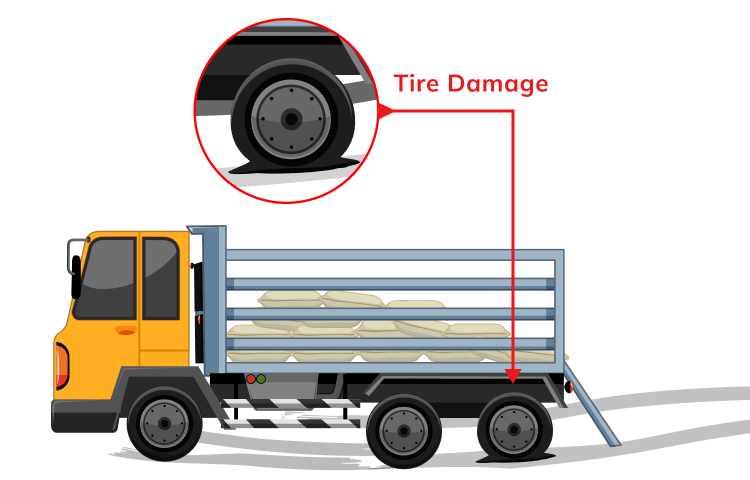
Learn how our TPMS can help your business grow

Uffizio Technologies Pvt. Ltd., 4th Floor, Metropolis, Opp. S.T Workshop, Valsad, Gujarat, 396001, India
by "Jignesh Pardeshi" <official@uffizio.com> - 08:00 - 4 Oct 2023




















